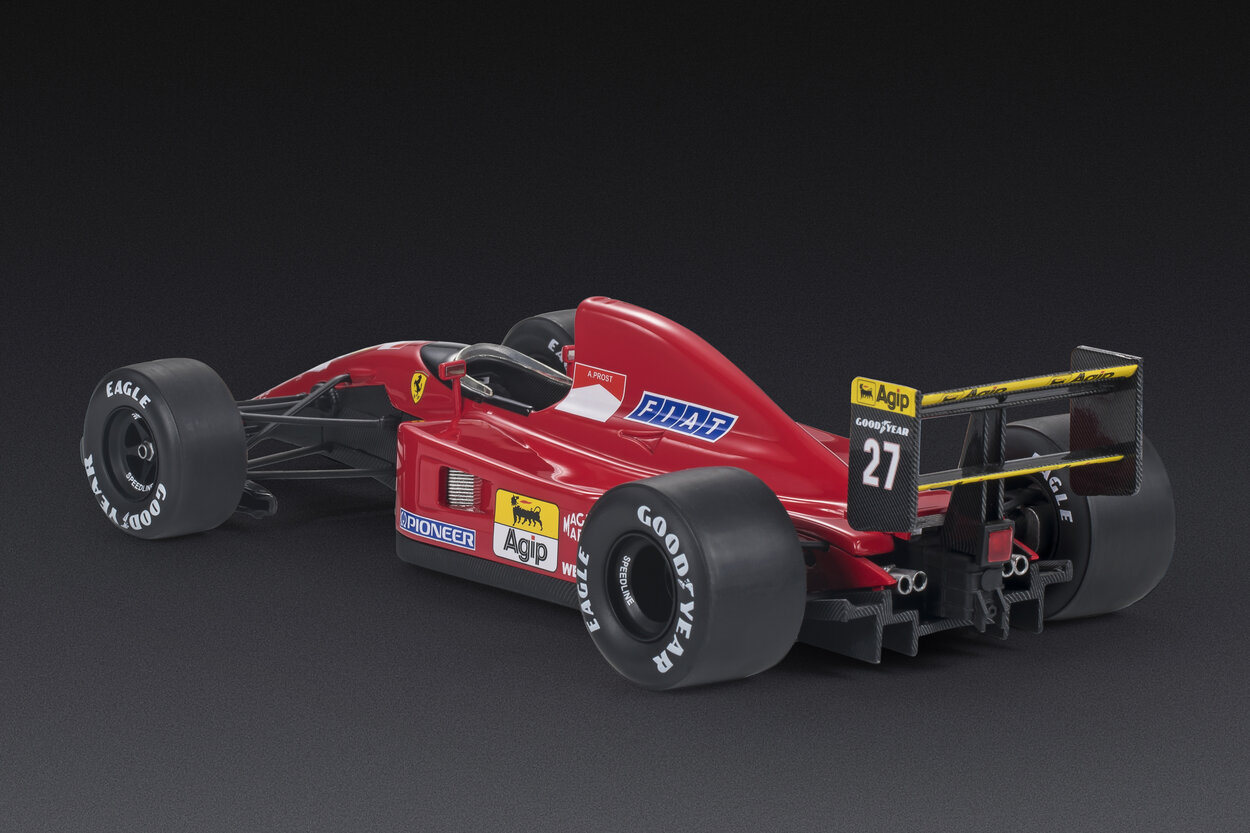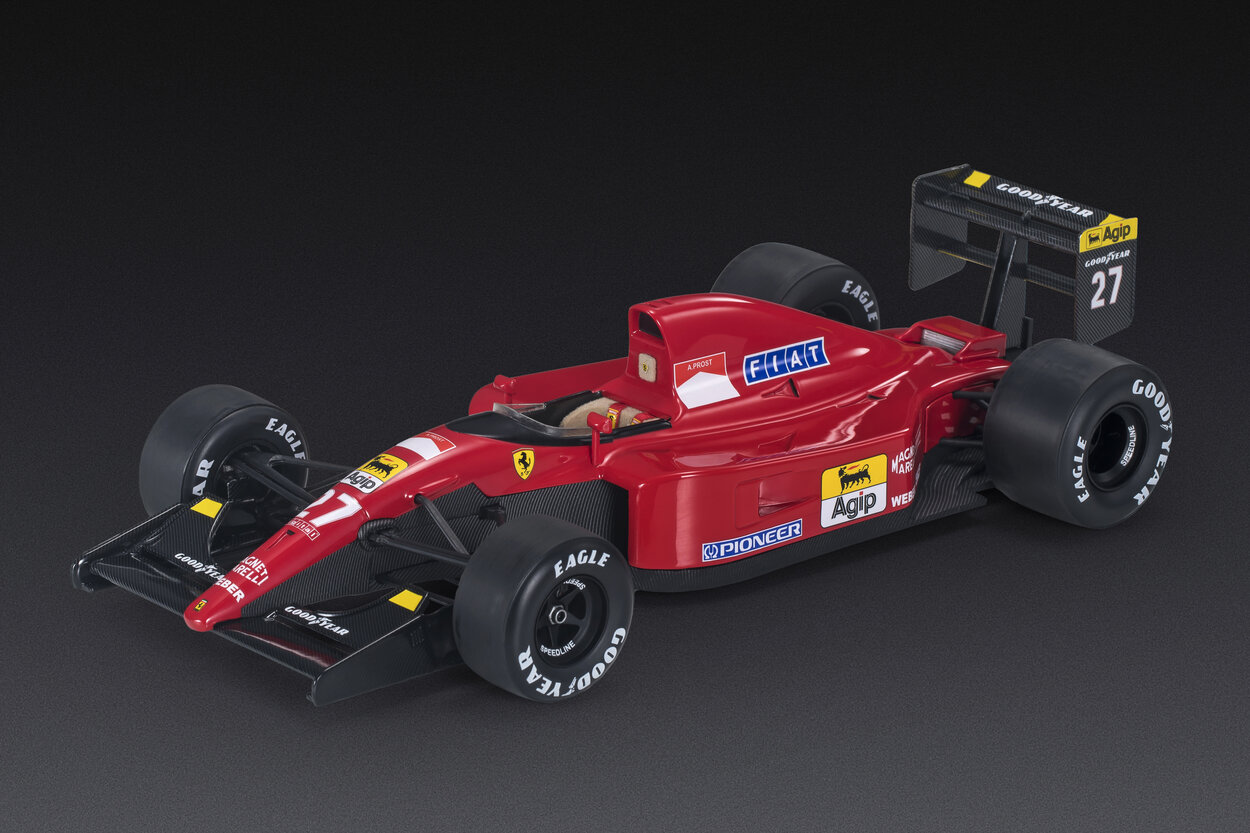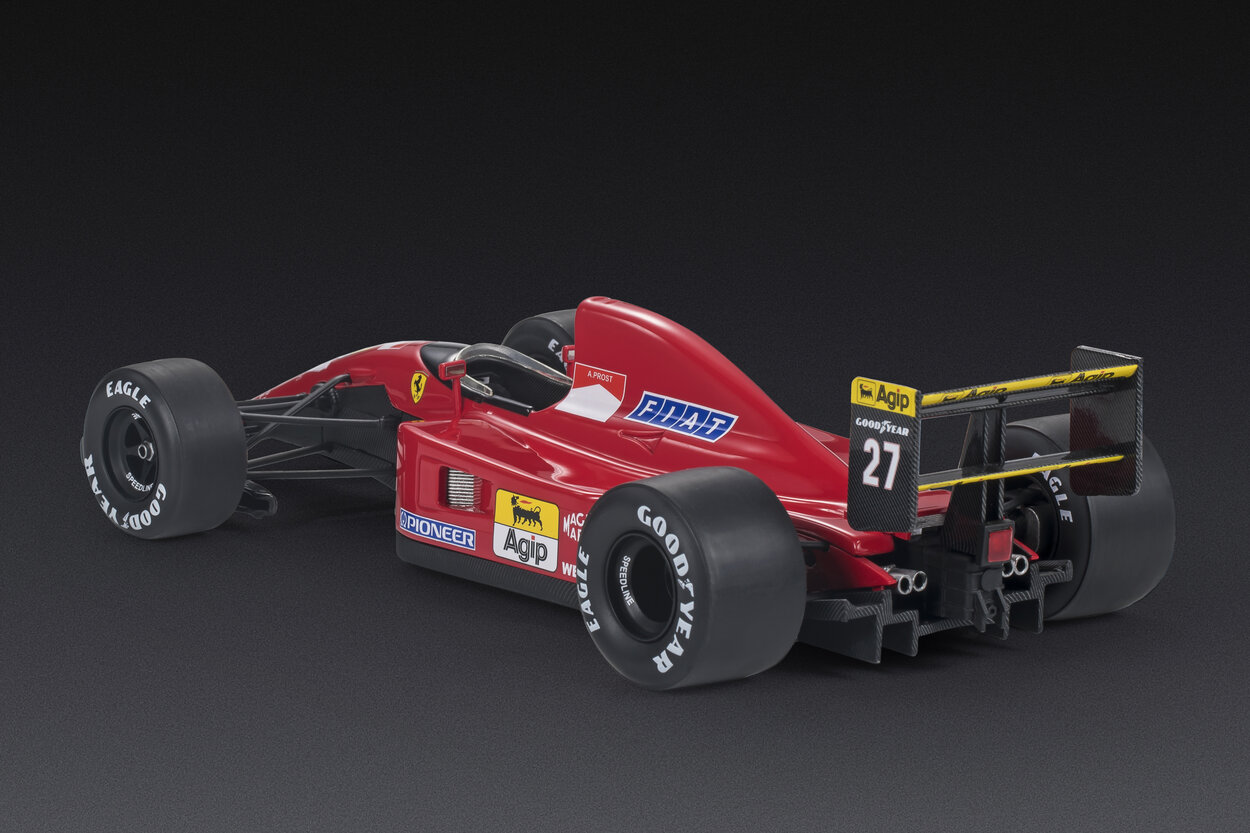Ferrari 643
With the 643, Ferrari concludes the continuous evolution of models that began with the 640 in 1989, the first single-seater designed by the former McLaren engineer John Barnard, with which Maranello hoped to start a new era. The year 1991 marks the end of the project, following Barnard’s departure from Ferrari.
1991 is a season of great disappointments for the Maranello team, which actually started with enthusiasm due to a competitive car that had come close to the title in the previous season with Alain Prost, and with the hiring of the emerging talent in Formula 1 at that time, the Frenchman of Italian descent, Jean Alesi, who had captured everyone’s attention in his first season and a half with Tyrrell.
Like the predecessor with which Ferrari raced in the first part of the season, the 643 is designed by Steve Nichols and Jean-Claude Migeot.

Drivers:
Alain Prost: The second half of the year brings four podium finishes, but no victories. The three-time French world champion finishes second in the French and Spanish Grands Prix, and third in the British and Italian races. While the results elude him, Alain’s frustration grows due to a situation entirely unexpected after the successes of the previous year. A crisis in Ferrari’s management certainly doesn’t help to clarify matters or calm the atmosphere. So much so that the season ends sadly with the dismissal of the Frenchman with still one race to go.
Jean Alesi: With the 643, the young man from Avignon steps onto the third step of the podium twice at Hockenheim and Estoril, scores points four times, and is forced to retire five times. A (nearly) colorless season, certainly not due to any shortcomings on the part of the driver.
Gianni Morbidelli: The very young driver from Pesaro, part of the Minardi team, is loaned by the Faenza-based team to Ferrari for the last race of the season to replace Prost. Thanks to his sixth-place finish in the Australian Grand Prix, he secures the first championship point of his career.
Our model cars:

In reality, the 643 is born to address the emergency created by a car – the 642 – which lost the competitiveness of the previous model. The main innovations are in aerodynamics, the most noticeable of which is a completely different nose – a tapered fairing that widens as it rises towards the body of the car instead of the characteristic thin ‘duck bill’ of all previous models.
The ‘Coca-Cola bottle’ profile of the rear of the car remains, despite a significant restyling of the side pods. The slight adjustment in engine power is countered by the same chassis problems that plagued the previous model.


